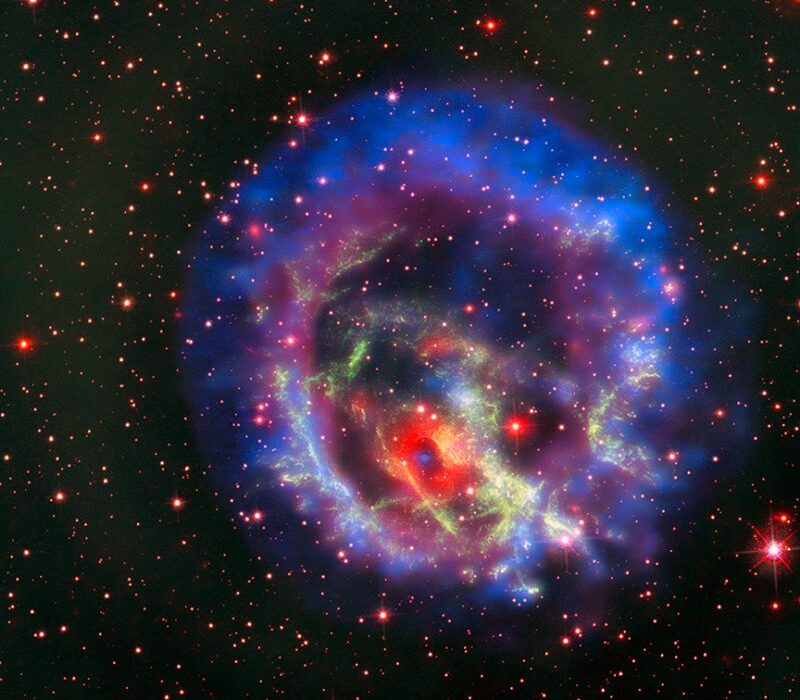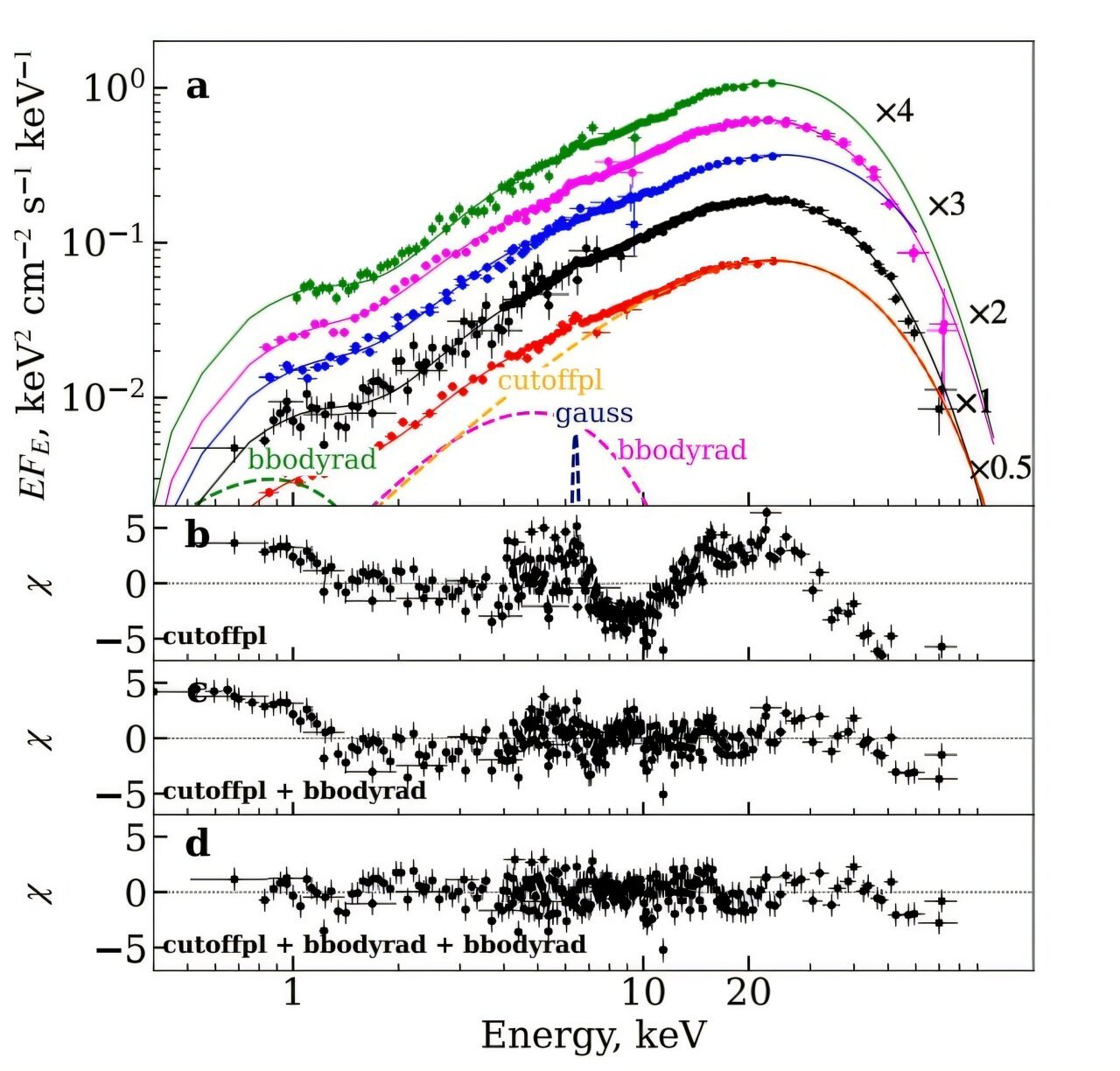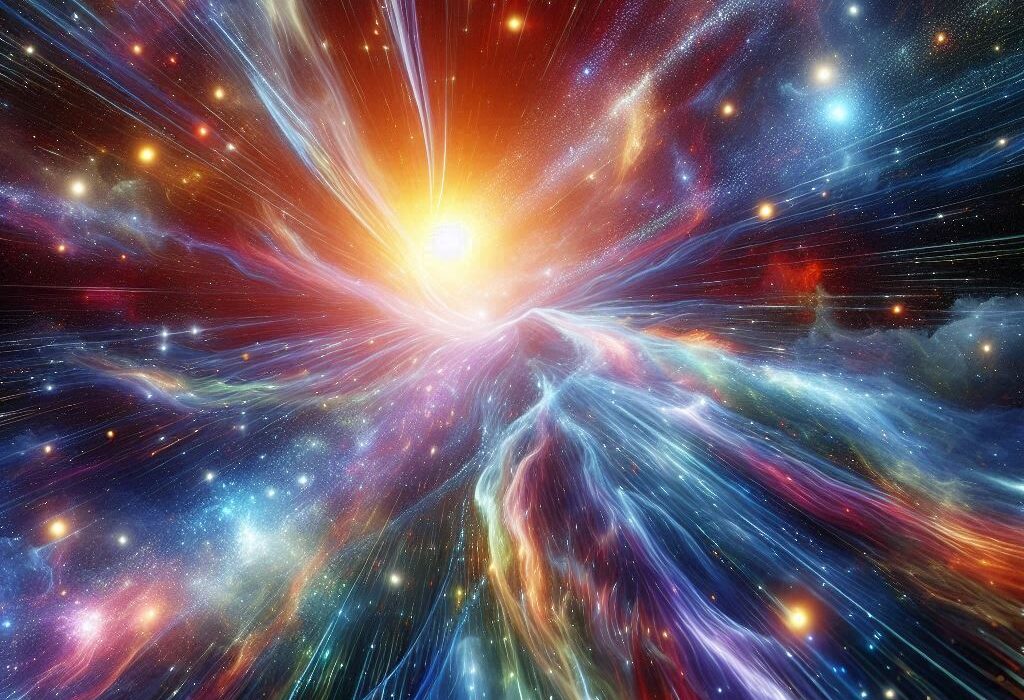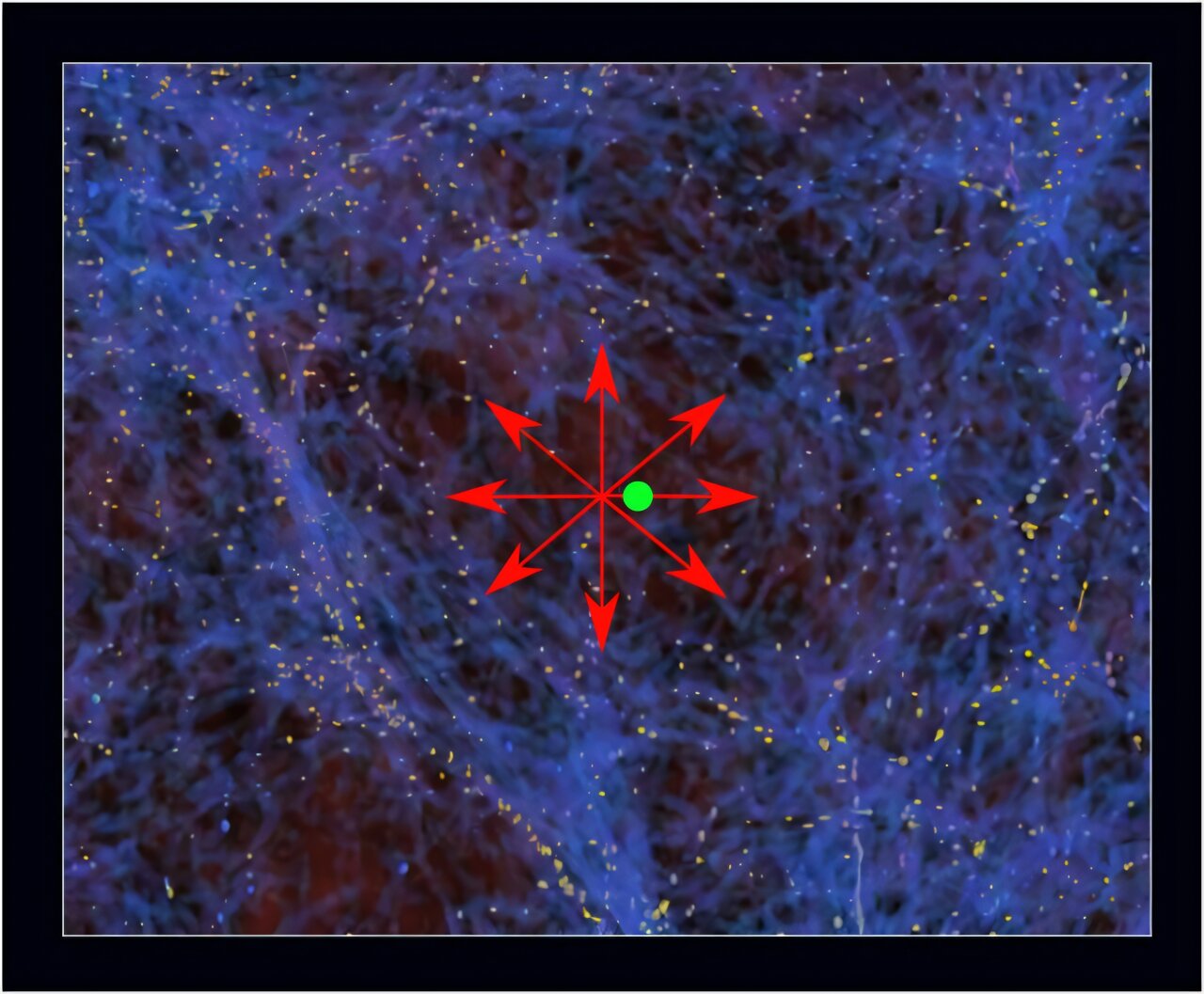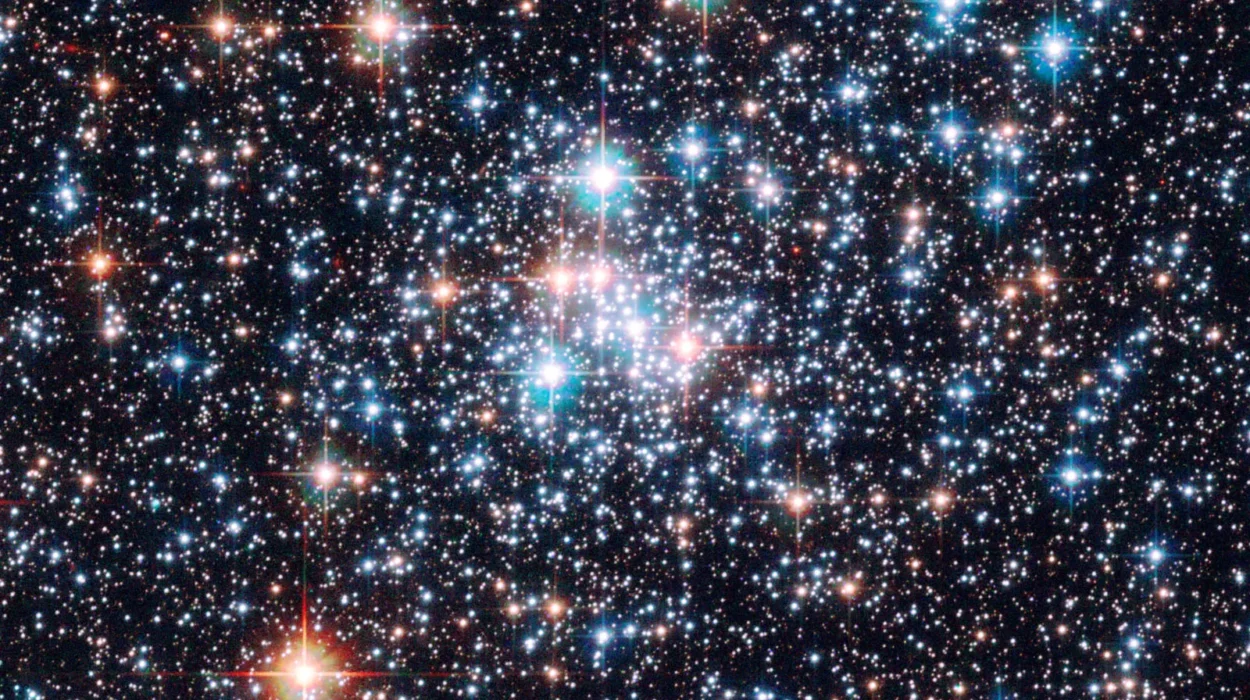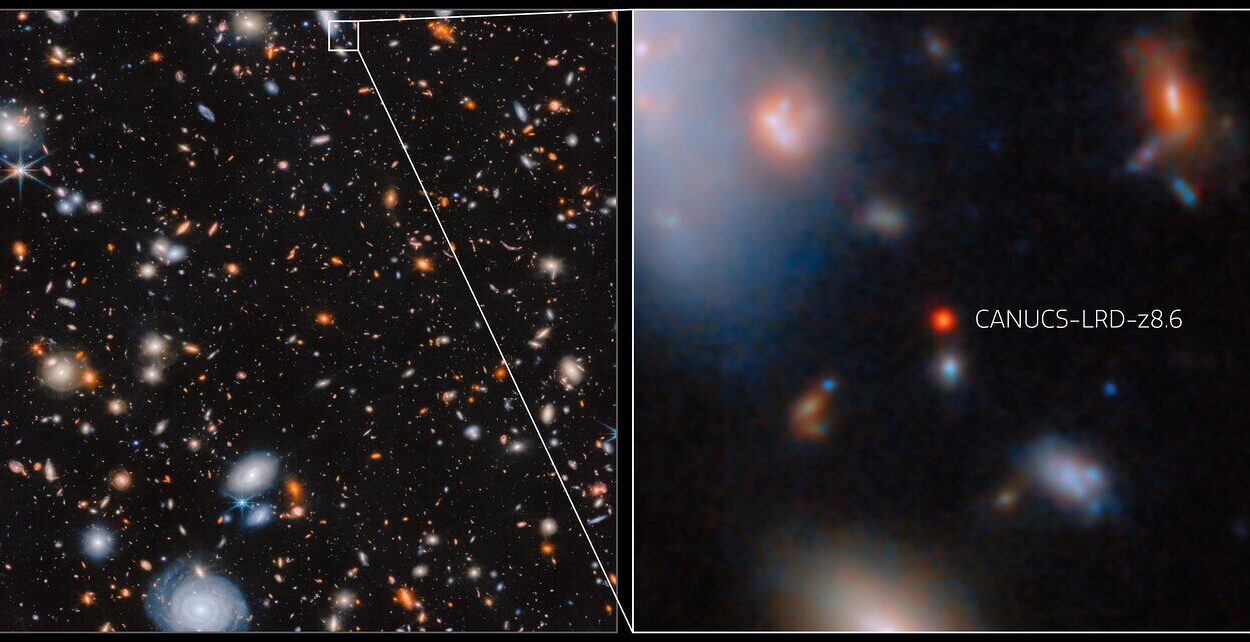It lasted just a few thousandths of a second — a fleeting pulse of radio energy racing across the cosmos. Yet in that blink of time, it carried a message from an era when the universe was a bustling workshop of young galaxies and newborn stars.
On March 4, 2024, astronomers using South Africa’s powerful MeerKAT radio telescope detected this astonishing signal: FRB 20240304B. The burst’s measured redshift — a kind of cosmic yardstick — placed it at an unprecedented distance. This is now officially the most distant fast radio burst (FRB) ever recorded, originating when the universe was only about 3 billion years old, roughly 10 billion years before today.
The finding, led by Dr. Manisha Caleb of the University of Sydney, was announced in a research paper published August 3 on the arXiv pre-print server. For scientists, this discovery is more than just breaking a record — it’s opening a new window into the ancient universe.
What Exactly Is a Fast Radio Burst?
Fast radio bursts are among the strangest and most tantalizing phenomena in modern astronomy. They are intense flashes of radio energy, lasting mere milliseconds, yet powerful enough to outshine entire galaxies in radio wavelengths during their brief existence.
Discovered only in 2007, FRBs have been detected all over the sky. Their precise origins remain a cosmic mystery. Theories range from giant magnetic eruptions on young neutron stars called magnetars, to more exotic possibilities like collisions between compact stellar remnants, or even hypothetical events involving cosmic strings — relics of the universe’s earliest moments.
What makes FRB 20240304B so special is not just its incredible distance, but the fact that it comes from an era astronomers call “cosmic noon” — the time when galaxies were at the height of their star-making frenzy.
A Journey Across the Universe
FRB 20240304B’s redshift was measured at 2.148 ± 0.001, meaning its light has been stretched by the expansion of the universe for over 10 billion years before reaching Earth. This puts it twice as far away as any other localized FRB previously known.
Its discovery relied on the Transient User Supplied Equipment (TUSE) instrument installed on MeerKAT. The burst carried an observed dispersion measure of 2,458.20 parsecs per cubic centimeter, a signal of how much matter it passed through on its journey.
With a peak flux of 0.49 janskys and a scattering time of 5.6 milliseconds at 1.0 GHz, FRB 20240304B was not only powerful but also revealed clues about the cosmic environments it traversed. Remarkably, it showed 49% linear polarization — meaning the radio waves’ electric fields were largely aligned — but virtually no circular polarization. That suggests either weaker-than-expected magnetic fields along its path or magnetic structures that are far more tangled than scientists anticipated.
Pinpointing a Host in the Deep Past
To truly understand an FRB, astronomers need to know where it came from. Using the James Webb Space Telescope (JWST), Caleb’s team traced the origin of FRB 20240304B to a small, clumpy, star-forming galaxy. This galaxy is a lightweight by cosmic standards, with only about 10 million solar masses of stars, a modest star formation rate of 0.2 solar masses per year, and a metallicity just 10–20% of the Sun’s.
The fact that such a faint, low-mass galaxy produced an FRB during cosmic noon is a crucial clue. It hints that these bursts may come from a wide variety of galactic environments — not just massive, metal-rich systems, but also smaller, scrappier galaxies in the throes of building themselves up.
Why This Discovery Matters
High-redshift FRBs like this one are more than rare cosmic curiosities. They are powerful probes of the “cosmic web” — the vast, invisible scaffolding of gas and dark matter that threads through the universe. By measuring how an FRB’s signal is dispersed and polarized, astronomers can map the otherwise unseen material between galaxies, helping answer big questions about how matter is distributed across cosmic history.
Dr. Caleb’s team emphasizes that FRB 20240304B effectively doubles the redshift reach of known localized FRBs. It’s the first one detected from cosmic noon, giving scientists a new vantage point to study the peak era of galaxy formation.
“This is exactly the kind of discovery that makes FRBs so exciting,” Caleb said in the paper. “Each one is like a flashlight beamed at us from another time in the universe’s life, revealing structures and conditions we could never otherwise see.”
The Mystery Deepens
While FRB 20240304B helps answer some questions, it raises others. Why was its magnetic environment so different from expectations? Do such distant FRBs behave differently from those closer to home? And perhaps most importantly — what actually causes these bursts in the first place?
The answers will require more detections, and with new telescopes like the Square Kilometre Array (SKA) set to come online in the coming years, the pace of discovery is likely to accelerate. Each new FRB from the distant past will bring astronomers closer to solving one of the great puzzles of modern astrophysics.
For now, FRB 20240304B stands as a cosmic whisper from an era when galaxies burned bright and young, carrying across 10 billion years the message that the universe still has secrets waiting to be heard.
More information: Manisha Caleb et al, A fast radio burst from the first 3 billion years of the Universe, arXiv (2025). DOI: 10.48550/arxiv.2508.01648

